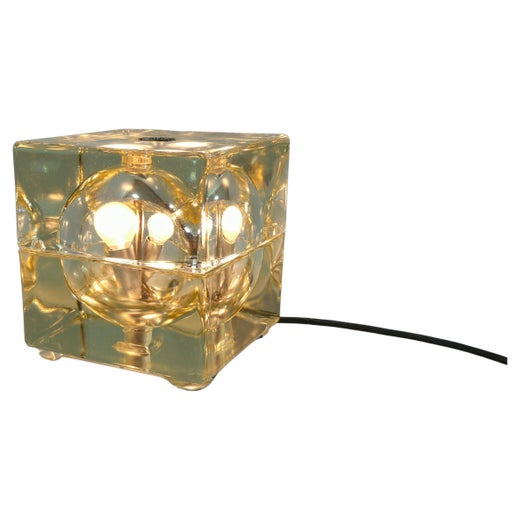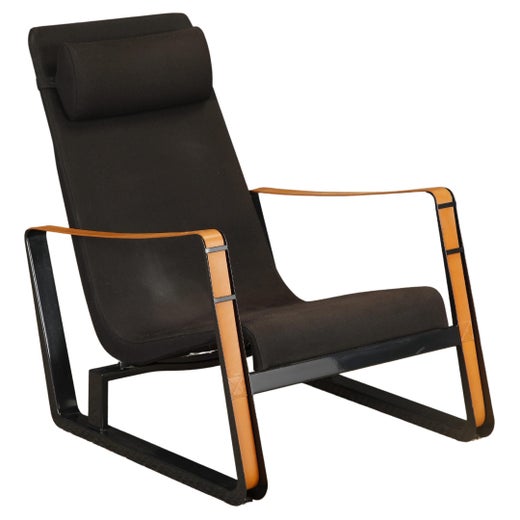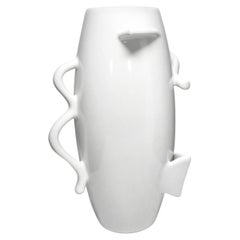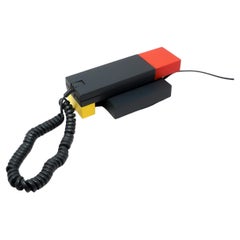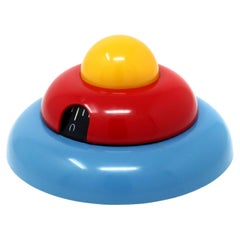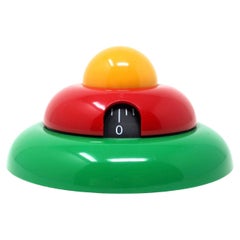Porcelain Poltrona Di Proust by Alessandro Mendini for Edition Vitra Design
About the Item
- Creator:Alessandro Mendini (Designer),Vitra (Manufacturer)
- Dimensions:Height: 10 in (25.4 cm)Width: 7 in (17.78 cm)Depth: 8.25 in (20.96 cm)
- Style:Post-Modern (Of the Period)
- Materials and Techniques:
- Period:
- Date of Manufacture:1996
- Condition:Wear consistent with age and use.
- Seller Location:Brooklyn, NY
- Reference Number:1stDibs: LU1546234065862
Alessandro Mendini
Alessandro Mendini was born in Milan in 1931. Through his work as an architect, designer, journalist, theorist and publisher, Mendini helped establish the Italian design sensibility on a global scale with a particular focus on neo-modern, avant-garde design as well as the crossover between art, design and architecture.
Mendini’s influential work spanned the arenas of graphics, furniture, interiors, architecture, stage design, writing and painting. He graduated from the Polytechnic University of Milan in 1959, and he began his career at the studio of artist-designer Marcello Nizzoli. He went on to become the publisher of the popular magazines Casabella (1970–76), Modo and Domus (each 1979–85).
In 1979, Mendini joined Ettore Sottsass and Michele de Lucchi as a partner at Studio Alchimia, a harbinger of the Memphis Group before he cofounded Domus Academy in 1982. In 1989, he and his brother Francesco established their architectural practice, Atelier Mendini, in Milan, where he worked until his death in February 2019. In recognition of his outstanding body of work, Mendini was awarded the Compasso d’Oro twice, in 1979 and 1981. He was also honored by the Architectural League of New York, made Chevalier des Arts et Lettres in France, and, in 2014, he was awarded the European Prize for Architecture.
Mendini’s work is included in the permanent collections of the Metropolitan Museum and the Museum of Modern Art in New York and the Centre Pompidou in Paris, among others.
Find vintage Alessandro Mendini chairs, vases, table lamps and other furniture and decorative objects on 1stDibs.
(Biography provided by STUDIO CADMIUM)
Vitra
Design house Vitra has garnered international recognition for more than 70 years — the Swiss family-owned furniture company has outfitted public spaces as well as residential properties and offices worldwide. It has been a proponent of modernist design since the 1950s. While the brand is heralded for its collaborations with mid-century modern icons such as Verner Panton, Charles and Ray Eames, Alexander Girard and others, Vitra’s German campus is also home to buildings designed by legendary architects Zaha Hadid and Frank Gehry. Among them is the Vitra Design Museum, an independent cultural institution that displays two centuries of design today.
Vitra was established in Weil Am Rhein, Germany, in 1950 by husband and wife team Willi and Erika Fehlbaum. On a trip to New York several years later, Willi Fehlbaum encountered the work of design polymaths Ray and Charles Eames in a furniture store and immediately knew that he had found his bliss.
In 1957, Vitra entered into a licensing agreement with Herman Miller, which saw the company producing designs by George Nelson, the Eameses and others. Later, Vitra partnered with Verner Panton and created the Panton chair, which was the first chair ever crafted from a single piece of molded plastic (it was also the first piece to be independently developed by Vitra). After 27 years of establishing the Vitra brand, the Fehlbaums passed control to their two sons, Rolf and Raymond Fehlbaum.
When a fire destroyed the factory in 1981, the brothers developed the Vitra Factory Campus, subsequently taking the opportunity to redirect the architectural landscape of the company. They created a masterplan with Nicholas Grimshaw, and together they erected four buildings in just a few short years.
In 1988, with the passing of Ray Eames and the disbandment of the Los Angeles Eames office, Rolf and Raymond acquired the furniture design portion of her estate, including the Eames prototypes and experimental models, housed today in the Vitra Design Museum.
Rolf and Roy opened the Vitra Design Museum in 1989. This began a period rich with design relationships, including collaborations with Antonio Citterio, Jasper Morrison, Maarten van Severen, Philippe Starck, Alberto Meda and others.
In 2012, leadership passed to Nora, the third generation of the Fehlbaums. Nora Fehlbaum has, like her grandparents, expanded the company and brought it into the 21st century with the acquisition of Finnish furniture manufacturer Artek. Nora has turned the company’s focus to sustainability yet still maintains its international and cultural relevance legacy.
Find a collection of Vitra lounge chairs, tables, side chairs, sofas and other furniture on 1stDibs.
You May Also Like
2010s Chinese Books
Paper
Early 2000s German Mid-Century Modern Models and Miniatures
Wood
Early 2000s Italian Sculptures
Porcelain
Vintage 1980s Italian Modern Coat Racks and Stands
Metal
Vintage 1970s Italian Mid-Century Modern Books
Copper
21st Century and Contemporary Italian Modern Coffee and Cocktail Tables
Crystal
Vintage 1960s American Books
Paper
Vintage 1960s American Books
Paper
20th Century Religious Items
Porcelain
20th Century American Books
Paper
More From This Seller
View AllLate 20th Century Italian Post-Modern Vases
Porcelain
Late 20th Century Post-Modern Scientific Instruments
Metal
Late 20th Century Post-Modern Models and Miniatures
Plastic
Late 20th Century Post-Modern Scientific Instruments
Plastic
Mid-20th Century Post-Modern Scientific Instruments
Metal
Late 20th Century Post-Modern Scientific Instruments
Plastic
Recently Viewed
View AllRead More
This Rare Set of 100 Alessi Vases Includes Designs by Scores of International Artists
Alessandro Mendini, Michael Graves, Ettore Sottsass and other design luminaries contributed to this unusual collection of porcelain wares representing a time capsule of late-20th-century decorative art.
Remembering Alessandro Mendini, a Towering Figure in Italian Design
Aided by photos taken of the maestro in his Milan studio, we honor the influential design talent who died last month at 87.
